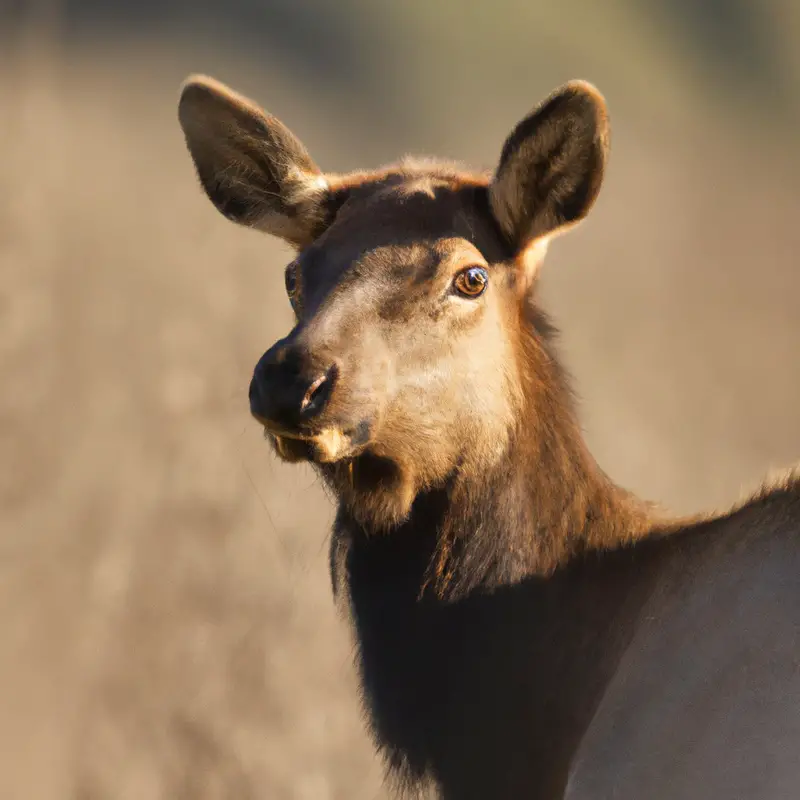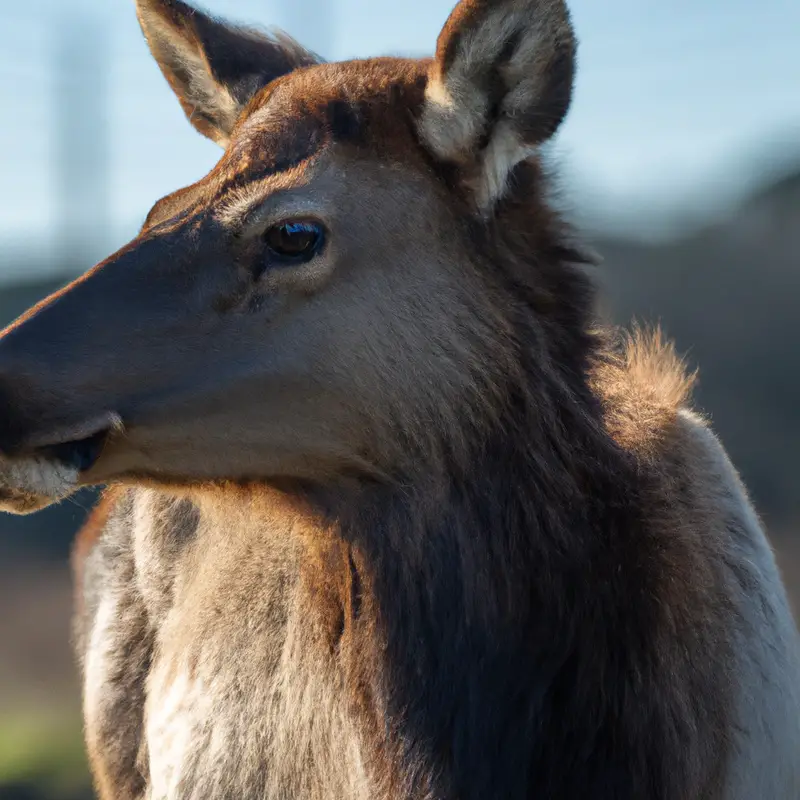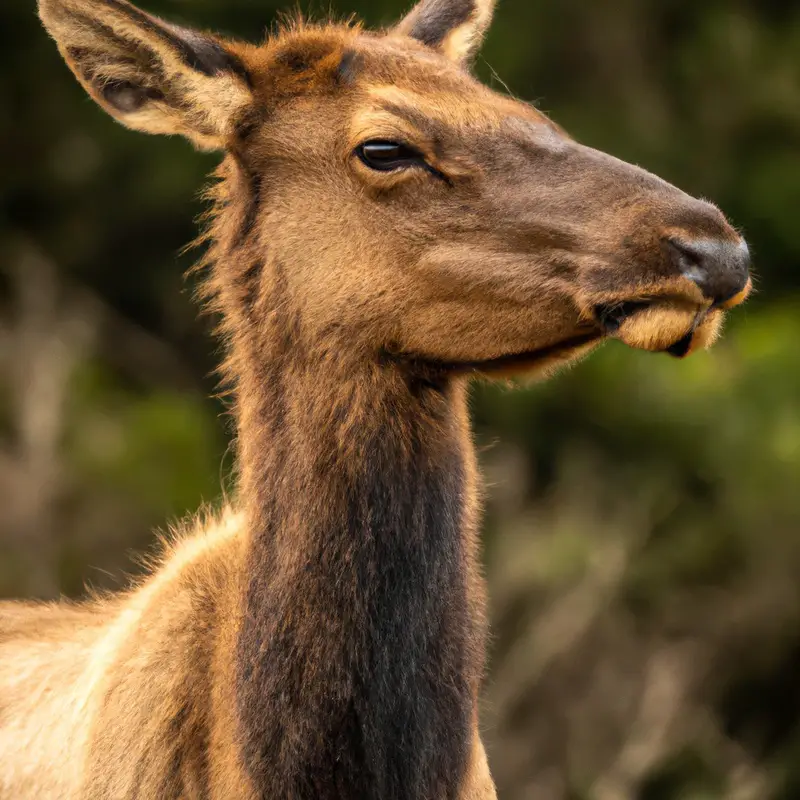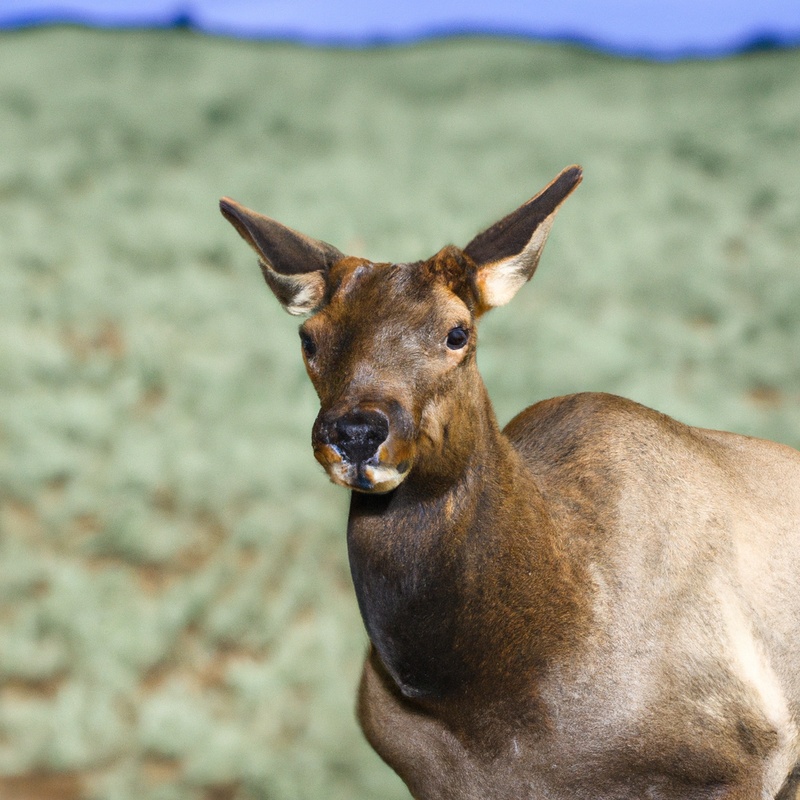Key Takeaways:
- California allows limited hunting of Tule elk.
- Hunting Tule elk helps manage population and ecosystem balance.
- Hunting permits for Tule elk are highly regulated and limited in number.
- Proper monitoring and conservation efforts are necessary to ensure sustainable hunting of Tule elk.
Imagine standing beneath the towering sequoias, the crisp California air filling your lungs as you embark on an adventure like no other. Today, we dive into the fascinating world of Tule elk hunting – an experience every outdoor enthusiast should add to their bucket list.
As an avid hunter, I’ve witnessed firsthand the incredible resilience and majestic beauty of these incredible creatures.
From their rich history to the unique characteristics that set them apart, we’ll explore it all. Join me as we delve into the regulations, gear, and strategies necessary for a successful Tule elk hunt.
Get ready to uncover the secrets of this captivating species and prepare for an unforgettable journey into the wilderness.
Category | Hunting Tule Elk in California |
Description | Tule elk is a subspecies of elk found only in California. Hunting tule elk is regulated by the California Department of Fish and Wildlife (CDFW) in order to conserve the population and maintain sustainable hunting practices. |
Pros |
|
Cons |
|
Regulations |
|
Recommendations |
|
Important Note | Hunting regulations and restrictions may change annually. It is essential to stay updated and comply with the latest guidelines provided by the CDFW. |
The Tule Elk: A Fascinating Species
History and Background of the Tule Elk
The Tule Elk is a unique species of elk found exclusively in California. It has a fascinating history and background.
Initially, the Tule Elk population faced a significant decline due to hunting and habitat loss.
However, thanks to conservation efforts, their numbers have rebounded. The Tule Elk is now protected and considered a symbol of successful wildlife restoration.
These majestic creatures can be found in dedicated reserves and national parks throughout California, where they continue to thrive and capture the curiosity of nature enthusiasts.

Unique Characteristics of Tule Elk
Tule elk, a subspecies of elk found only in California, possess several unique characteristics. Firstly, they are the smallest subspecies of elk in North America, with adult males weighing between 450 and 550 pounds.
Secondly, Tule elk have distinct antlers that branch forward rather than spreading apart like other elk.
Thirdly, their vocalizations differ from other elk, producing higher-pitched bugles. In addition, Tule elk exhibit a preference for wetland habitats, grazing on sedges and grasses.
Their restricted range and specific adaptations make them a fascinating and important species to study and conserve.

Conservation Efforts and Population Recovery
Conservation Efforts and Population Recovery: Conservation efforts for Tule elk in California have significantly contributed to their population recovery. These efforts involve protecting and preserving their natural habitats through various initiatives.
Restoration of suitable habitats and the establishment of protected areas have allowed Tule elk populations to thrive.
Additionally, regulating hunting practices ensures sustainable population levels. Collaborative efforts involving government agencies, conservation organizations, and local communities play a vital role in safeguarding these magnificent animals.
With ongoing conservation efforts, Tule elk populations have shown promising signs of recovery, ensuring a brighter future for this fascinating species.
Hunting Tule Elk: Regulations and Requirements
Hunting Seasons and Bag Limits
Hunting seasons and bag limits for Tule elk in California vary depending on the specific zone and hunt area. The California Department of Fish and Wildlife sets these regulations to manage the population and ensure sustainable hunting.
It’s important to review the current hunting regulations specific to your hunting area to determine the season dates and bag limits for Tule elk.
These regulations are subject to change, so it’s crucial to stay informed and comply with the regulations to conserve the elk population. Remember to always follow ethical hunting practices and respect the environment.
License and Tagging Requirements
To legally hunt Tule elk in California, you must possess a valid hunting license. This license can be obtained through the California Department of Fish and Wildlife.
Additionally, it is mandatory to have a tag specifically for Tule elk.
These tags are limited in number and are distributed through a lottery system. It’s important to understand and adhere to all licensing and tagging requirements to ensure a legal and responsible hunting experience.

Weapons and Ammunition Restrictions
When it comes to hunting Tule elk in California, it’s important to be aware of the weapons and ammunition restrictions in place. The regulations state that hunters must use firearms with a minimum caliber of .240 and a minimum bullet weight of 90 grains.
Fully automatic firearms and those with a magazine capacity of more than 10 rounds are prohibited.
Additionally, the use of .22 caliber rimfire rifles is not allowed. These restrictions are in place to ensure the safety and ethical hunting practices for both hunters and the elk population.
Planning Your Tule Elk Hunt
Choosing the Right Hunting Location
Choosing the right hunting location for your Tule elk hunt is key to a successful and fulfilling experience.
Here are some factors to consider when selecting your hunting spot:
- Research: Gather information about different hunting areas and their elk populations. Look for areas with stable or increasing elk numbers.
- Accessibility: Consider how easily you can reach the hunting location. Look for areas with good road access and consider any physical limitations you may have.
- Habitat: Tule elk thrive in a variety of habitats, including grasslands, marshes, and forests. Identify the type of habitat preferred by elk and choose a location that matches their habitat needs.
- Local Expertise: Consult with local hunters, wildlife biologists, or hunting guides who have firsthand knowledge of the area. They can provide valuable insights and help you make an informed decision.
- Public vs. Private Land: Determine whether you prefer hunting on public or private land. Each has its advantages and limitations, so weigh the pros and cons before making a decision.
Remember, choosing the right hunting location can greatly enhance your chances of a successful hunt and an enjoyable experience.
Hiring a Guide or Going Solo
Hiring a guide or going solo is a personal choice when it comes to hunting Tule elk in California.
Both options have their advantages and considerations.
If you hire a guide, you’ll benefit from their expertise and knowledge of the area, increasing your chances of a successful hunt.
They can also assist with logistics, equipment, and provide valuable insights.
However, hiring a guide can be costly.
On the other hand, going solo allows you the freedom to plan and execute the hunt according to your preferences.
You can enjoy the adventure of exploring the wilderness on your own terms.
However, be prepared to invest time and effort in scouting, research, and understanding hunting regulations.
Consider your experience level, budget, and desired level of support when deciding between hiring a guide or going solo.
Both options can lead to a memorable and successful Tule elk hunting experience.
Understanding Tule Elk Behavior and Habits
Tule elk are fascinating animals with unique behavior and habits. To understand them better, it’s important to know that they are primarily active during the early morning and late afternoon.
They tend to rest during the hottest parts of the day.
Tule elk are social creatures and live in groups called herds. Males, or bulls, have large antlers which they use to establish dominance during mating season.
During other times, they can be seen grazing calmly in open grasslands.
Being aware of these behaviors will greatly enhance your chances of a successful Tule elk hunt.
Essential Gear for Tule Elk Hunting
Firearms and Optics
Firearms: When it comes to hunting Tule elk in California, having the right firearm is essential. Opt for a rifle with sufficient power and accuracy to take down large game.
Bolt-action or semi-automatic rifles chambered in popular calibers like .270 Winchester or .30-06 Springfield are excellent choices.
Make sure to select a firearm that you feel comfortable and confident shooting, as accuracy is key. Optics: Alongside your firearm, investing in a high-quality optic is crucial for a successful hunt.
A reliable rifle scope or binoculars with good magnification and clarity will greatly improve your chances of spotting elk from a distance.
Look for optics with features like adjustable magnification, waterproofing, and durable construction. It’s also important to practice using your optics before the hunt, ensuring you can quickly and accurately acquire targets in different lighting conditions.
Clothing and Footwear
When heading out for Tule elk hunting in California, it’s important to have the right clothing and footwear.
Here are a few things to consider:
- Camouflage: Wear camouflage clothing to blend in with the environment and avoid being detected by elk.
- Layering: Dress in layers, so you can add or remove clothing as needed to regulate your body temperature throughout the day.
- Insulated Jacket: Bring an insulated jacket for colder weather or early morning hunts.
- Waterproof Gear: Consider wearing waterproof clothing and boots to stay dry during wet conditions.
- Sturdy Boots: Invest in a pair of sturdy, comfortable boots with good ankle support for navigating different terrains.
- Breathable Fabrics: Opt for clothing made of breathable fabrics to keep you comfortable during long hikes and high-intensity activities.
- Hats and Gloves: Bring a hat to protect your head from the sun and gloves to keep your hands warm and provide grip when handling your weapon.
Remember to check the weather forecast and dress accordingly.
Being prepared with the right clothing and footwear will not only keep you comfortable but also enhance your hunting experience.
Field Dressing and Processing Tools
Field dressing and processing tools are essential for efficiently and effectively preparing your harvested Tule elk.
The right tools can make the process quicker and easier, ensuring that the meat is properly handled for optimal taste and safety.
Some important tools to have include a sharp knife for field dressing, a bone saw for splitting the carcass, game bags for keeping the meat clean, and a cooler to store the meat.
Additionally, gloves, bags for organ removal, and a meat grinder can also be useful for processing the meat.
Having these tools ready and accessible will streamline the field dressing and processing process, making it a smoother and more enjoyable experience.
Tips for a Successful Tule Elk Hunt
Scouting and Pre-Season Preparation
Scouting and pre-season preparation are key for a successful Tule elk hunt. Start by researching the area and learning about elk habits and patterns.
Look for areas with food, water, and cover.
Next, scout the hunting grounds to find areas with fresh signs of elk activity. Set up trail cameras to gather information on elk movements.
Practice shooting to improve your accuracy.
Finally, make sure you have all the necessary permits and licenses. With proper scouting and preparation, your chances of a successful hunt will greatly increase.
Tactics for Spotting and Stalking
Now, let’s talk about some tactics for spotting and stalking when you’re out hunting Tule elk in California. One important tactic is to move slowly and quietly as you scan the landscape for any signs of movement or elk.
Pay attention to the wind direction, as elk have sensitive noses and can pick up your scent easily.
Utilize natural features like hills and trees to stay hidden and use binoculars or spotting scopes to search for elk from a distance. Remember, patience is key when it comes to spotting and stalking elk, so take your time and stay focused on the task at hand.
Shot Placement and Ethical Harvesting
Shot placement and ethical harvesting are essential factors to consider when hunting Tule elk in California.
As a responsible hunter, it is important to ensure a clean and humane kill.
Aim for the vitals, which include the heart and lungs area, to ensure a swift and ethical harvest.
Take your time to assess the shot angle, distance, and target position.
Remember to be patient and wait for the right moment to take the shot.
Additionally, always follow state hunting regulations and guidelines to ensure a responsible and ethical hunting experience.
Trophy Care and Meat Processing
Meat Processing and Recipes
Meat Processing and Recipes: Once you’ve successfully hunted a Tule elk in California, the next step is meat processing.
Start by field dressing the animal as soon as possible to ensure the quality of the meat.
Remove the entrails and organs, and then skin the elk carefully.
When it comes to cutting the meat, it’s important to have sharp knives and a clean cutting surface.
Break the elk down into manageable sections, such as the hindquarters, forequarters, and backstraps.
Trim any excess fat and silver skin, and then package the meat for freezing or immediate cooking.
For recipes, Tule elk meat is incredibly versatile and can be used in various dishes.
Try marinating the steaks and grilling them for a delicious smoky flavor.
Ground elk can be used in burgers, chili, or meatballs.
Don’t forget to experiment with different spices and seasonings to enhance the natural richness of the meat.
Frequently Asked Questions
Can non-residents hunt Tule elk in California?
Yes, non-residents can hunt Tule elk in California.
However, they must obtain the appropriate licenses and tags, just like residents.
It is important to check the specific regulations and requirements set by the California Department of Fish and Wildlife before planning your hunt.
Additionally, non-residents may need to apply for limited-entry or special hunt permits.
Make sure to familiarize yourself with the rules and regulations to ensure a legal and enjoyable hunting experience.
Are there any special considerations for hunting Tule elk in national parks?
When hunting Tule elk in national parks, there are several special considerations to keep in mind:
- Permits and regulations: Make sure to obtain the necessary hunting permits and familiarize yourself with the specific regulations for hunting Tule elk in national parks.
- Season and hunting zones: National parks may have specific seasons and designated hunting zones for Tule elk. Be aware of these restrictions and plan your hunt accordingly.
- Wildlife management objectives: National parks often have wildlife management objectives in place, which may include population control. It’s important to understand these objectives and how they may impact your hunting experience.
- Respect for the environment: Always practice ethical hunting and respect the natural environment. Be mindful of the impact you have on the ecosystem and adhere to Leave No Trace principles.
By considering these factors, you can ensure a responsible and enjoyable hunting experience while preserving the natural habitat of Tule elk in national parks.
What are the best times of year to hunt Tule elk in California?
The best times to hunt Tule elk in California are during the archery seasons in August and September, as well as the general rifle seasons in October and November. During these times, the elk are more active and have moved to lower elevations, making them more accessible to hunters.
It’s important to check specific season dates and regulations set by the California Department of Fish and Wildlife.
Be prepared for varying weather conditions and plan your hunt accordingly.
Final Verdict
Hunting Tule elk in California offers a unique and fulfilling experience for avid hunters.
With a rich history and successful conservation efforts, the Tule elk population has made a remarkable recovery, providing ample opportunities for hunters.
By understanding the regulations and requirements, as well as equipping yourself with the right gear and knowledge of Tule elk behavior, you can increase your chances of a successful hunt.
Remember to prioritize ethical harvesting and proper trophy and meat care, ensuring a memorable and satisfying experience.
Happy hunting!








